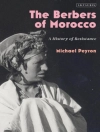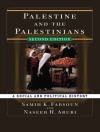At a time when women were barred from clerical roles, middle-class women made use of the informal power structures of Victorian and Edwardian associationalism in order to actively participate as citizens.
This investigation of women’s part in civic life provides a fresh approach to the ‘public sphere’, illuminates women as agents of a middle-class identity and develops the notion of a ‘feminine public sphere’, or the web of associations, institutions and discourses used by disenfranchised middle-class women to express their citizenship. The extent of middle-class women’s contribution to civic life is examined through their involvement in reforming and philanthropic associations as well as local government.
Making use of a range of previously untapped sources, this fascinating book will appeal in particular to those with an interest in Gender History and Scottish History.
Tabella dei contenuti
Introduction
1. The organisations
2. The ‘feminine public sphere’
3. Temperance reform and the ‘feminine public sphere’
4. The women’s movement and female temperance reform
5. New views of the women’s suffrage campaign: Liberal women and regional perspectives
Conclusion
Appendices
Bibliography
Index
Circa l’autore
Lynn Abrams is Professor of Gender History at the University of Glasgow












